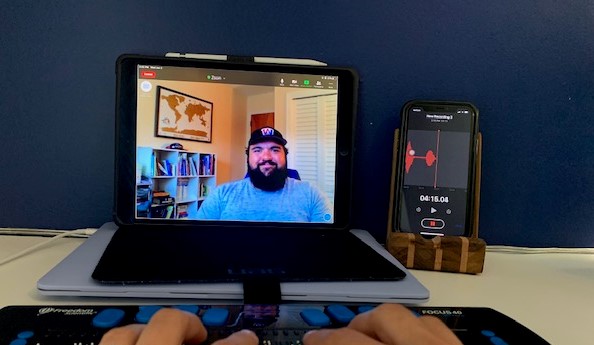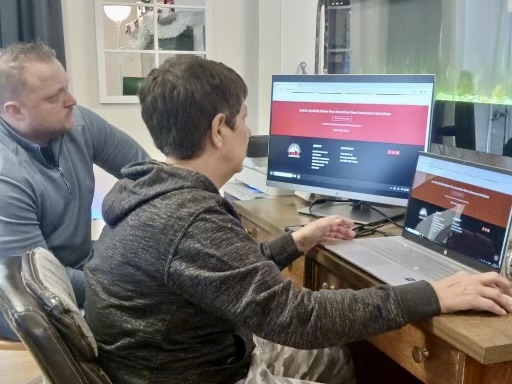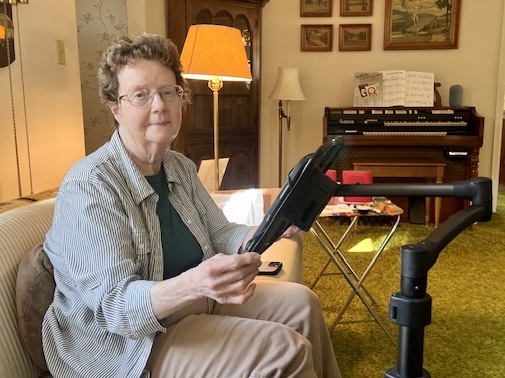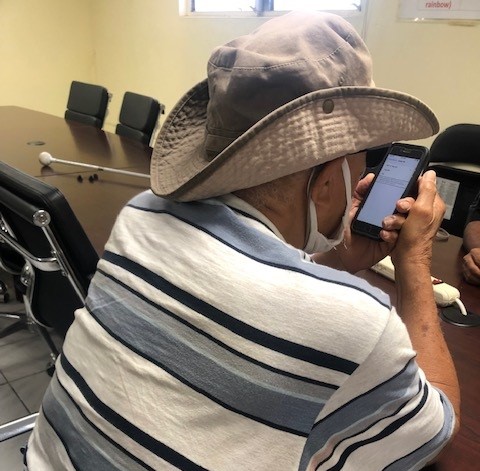Navigating programs to get assistance when you are deafblind can be challenging. It’s often a personal and private struggle for the individual and their family, and it is easy to feel lost and overwhelmed in the process. Understanding what the program you are applying to offers is important, and so are program requirements, process timelines, and anticipated challenges. All of these factors can be addressed with honest and consistent communication between the applicant, their family members, and the program representatives.
“It’s a collaborative effort to receive services,” said Carly Fredericks, iCanConnect New Jersey Program Coordinator. “Individuals who are deafblind yearn for access and communication but often feel vulnerable when navigating the process. Our goal is to make the individual feel in control and that comes through being honest and setting expectations with the individual, their advocate, and the people who are supporting them, with empathy and compassion.”
When Linda*, a New Jersey resident in her early 40s, began researching services to meet her increasing distance communication needs, her sister, Cheryl*, was heavily involved in the process. Linda was born deaf and uses American Sign Language (ASL), but when her vision loss progressed as a result of Usher Syndrome, she needed access to the equipment and technology that would help keep her independent and stay connected to her family, friends and community. Initially, she reached out to the New Jersey Commission for the Blind and Visually Impaired. During a conversation with a representative, she was referred to iCanConnect, the National Deaf-Blind Equipment Distribution Program.
Cheryl supported her sister through the process of applying to iCanConnect and provided Linda with access to the information she needed along the way so she could effectively advocate for her needs. Prior to losing her vision, Linda worked in IT where she gained strong technology skills. When she was introduced to a braille display by a deafblind woman she met while applying to the program, she used those skills and worked hard over the course of several months to read and write braille. Based on iCanConnect’s individual assessment of her distance communication needs, Linda received the equipment and training necessary to help her become independent again and get connected through technology, including a smartphone, laptop computer, standard keyboard, and braille display.
Linda’s distance communication goals are two-fold. She wants to be able to find employment to help provide for her son and daughter, and she wants to communicate without an intermediary person, something that is important to many individuals who are deafblind. Her primary methods of distance communication are text messaging and email. She uses text messaging via the voice dictation feature on her smartphone and through her braille display to communicate with her family and friends. She likes it because text messaging is more immediate and casual. She uses email for more formal communication – like contacting her children’s teachers. Recently, Linda’s been using her laptop to navigate job sites and plans to use it to apply for employment.
“I feel like I have my sister back,” said Cheryl. “She finally has the tools to speak her mind in the manner she wants to speak it without someone in between trying to communicate it. It’s given her a sense of worth.”
Recently, Linda texted back and forth with her iCanConnect trainer, Brian Kenyon, while they worked to fix an issue. “It was just the two of us communicating,” said Brian. “That’s huge. There doesn’t have to be a middle person involved.”
“We want people to feel like they are in control of their lives again,” said Carly. “My favorite part of my job is when a program participant communicates directly with a text, email or phone call. It gives us joy to see our participants regain their passion to rise above the challenges they face every day. We are humbled to be part of the process that helps them regain their independence through the use of technology.”
*Individual’s name has been changed to protect her privacy



